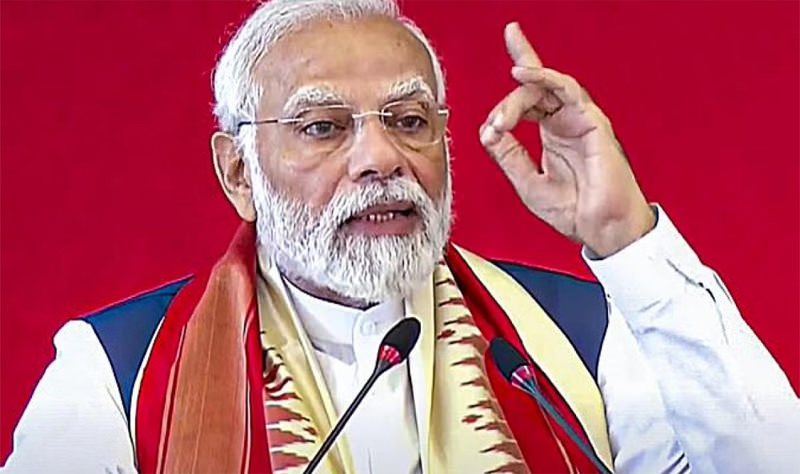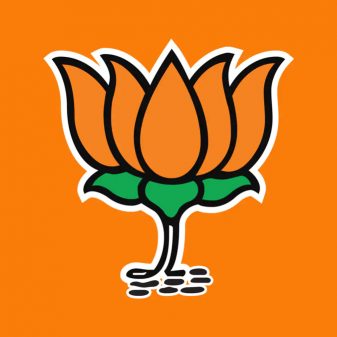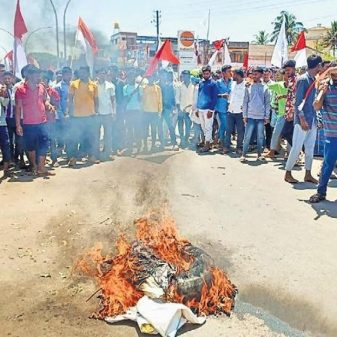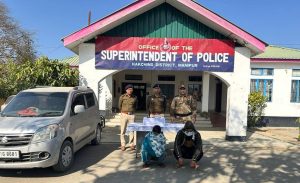
Prabhu Chawla
The current envoy Vikram Doraiswami is known more for his social skills among London’s elite than for promoting bonding with Indian communities.
For India’s popular peregrinator Prime Minister Narendra Modi, the world is his oyster, and the External Affairs Ministry is the sous chef. But of late, his foes are cooking up a storm on Western streets. Khalistani provocateurs are targeting India’s global clout powered by Modi, the darling of world leaders, as attested by mammoth diaspora crowds greeting him at every airport, town hall and public rally.
As the PM prepares for his third political battle at home, he is expected to travel abroad to consolidate his influence. Japan, Papua New Guinea and Australia in May are on the bucket list.
On May 20, he lands in Hiroshima for the G7 summit—his fifth, to be followed by Quad from May 23 to 24 in Sydney. On the heels of his Down Under tour is the official bilateral visit to America in June, just before President Biden enters election mode. Since Modi won’t be able to travel abroad after the G20 deliberations in India end, his team plans to use his diplomatic air miles to reaffirm his identity overseas.
Besides the usual official huddles, dinners and lunches, his team is exploring the possibility of organising massive public rallies like in the past.
As of March 2023, Modi has made 69 foreign visits covering all the Earth’s continents. He has flown over half a million miles to around 80 countries. He has visited America seven times, Japan six, China five, Russia four and the UK thrice in nine years.
The advance parties of officials and BJP leaders have already landed in these countries even as the MEA and the PMO carefully draw up their schedules. Spoiling the party are warnings of separatist disruptions to a projected vishwa guru’s vishwa yatra.
Khalistani vandals have thrown a spanner in the works of Indian intelligence capabilities. Violent demonstrations in front of Indian missions and Hindu temples in various Australian cities have blotted their copybook while the local government is unable to punish separatists on its soil who desecrated Indian shrines. Khalistan supporters in the US tried to set the Indian consulate in San Francisco on fire; they’ve threatened to organise more protest rallies across the USA.
In Canada, Indian diplomats, including the High Commissioner, can’t move around freely, fearing harm to their person. Intelligence reports say Khalistanis will hold huge protests during Modi’s visit to Australia and the USA.
Undeterred, the establishment has decided to mobilise the Sangh Parivar and other nationalist elements abroad, including Sikhs, by organising massive welcome gatherings for the prime minister. The PMO and the Home Ministry are baffled by the sudden spurt in anti-India activities.
Their primary concern is the failure of the agencies and the local missions to anticipate anarchy, take preventive measures and alert the Centre to mount pressure on the hosts. The conduct of Indian High Commissioners in Australia, Britain and Australia in curating a pro-India local environment is under scrutiny.
Though Modi is unlikely to visit Britain before the 2024 elections, the PMO and HMO are fuming over secessionists pulling down the tricolour from the High Commission building in London. It is perhaps the first time Indian flags have been pulled down by a hostile crowd anywhere in the world. Local leaders of Indian origin in the UK feel that outreach initiatives by the High Commission to connect Sikhs and Hindus are below par. The current envoy Vikram Doraiswami is known more for his social skills among London’s elite than for promoting bonding with Indian communities.
An expert in Mandarin, he has been enjoying plum postings irrespective of the party in power: 15 assignments in 30 years. His last stint was a short spell as Indian High Commissioner to Bangladesh when relations between the two nations were uncomfortable; prime minister Sheikh Hasina left him hanging for months before granting an audience. Indians settled in Australia have similar grievances against their diplomats.
According to leading Indians who regularly interact with the mission, High Commissioner Manpreet Vohra, who took charge in April 2021, doesn’t have the necessary experience to deal with ethnic conflicts and local civil society groups. In 25 years in service, he hasn’t been posted in any country with a large concentration of Sikhs and PIOs.
Hence it was left to Prime Minister Modi to deal with the Australian PM directly. The PMO is hopping mad at the arson attempt in LA. America has been for long the safe abode of Khalistan extremists. But the style and ferocity of their protests have led the government to review the role of Indian diplomats.
Our ambassador to Washington, Taranjit Sandhu (who is on extension), is an old American hand, having spent around 11 years in the US before becoming the envoy in January 2020. Even though he has failed to counter and neutralise Khalistani sentiments by leveraging his influence on Modi’s wealthy and successful Indian admirers; the PM has always received rousing welcomes on all his American visits.
It is not enough for a leader and his country to be adored at home to become a global Goliath. The quality of diplomats a government deploys determines the quantity of its success overseas. Currently, there are about 900 IFS officers posted in 193 Indian missions and South Block. Many heads of sensitive missions have been picked up more for their loyalty than for the quality of their diplomatic skills.
Barring Natwar Singh who lost his job for a bit of undiplomatic adventurism, MEA has always had an experienced politician at the helm who understood the politics of diplomacy. Modi handpicked a retired IFS officer lacking political credentials as India’s External Affairs Minister.
Unfortunately, S Jaishankar comes across as an arrogant diplomatic genius specialising in undiplomatic offensiveness. It is on his almost five-year uninterrupted watch as India’s diplomatic goalie when Indian diplomacy has scored the most self-goals and failed to check extremist effervescence. While Modi keeps India’s standard flying abroad, Indian missions in sensitive nations are flying their flags of competence at half-mast.
Celebration and facilitation of the Modi Mantra cannot be the double engines of India’s foreign policy unless diplomacy acquires the political vision and will to vanquish its domestic enemies abroad. If diplomacy is war by other means, as Clausewitz said, India is already at war with extremism in which the idea of New India, the prime minister and his legacy are the targets. The battle is just beginning. Indian missions must have a mission, not zero vision, with eyes closed. (The writer is an Indian journalist)





